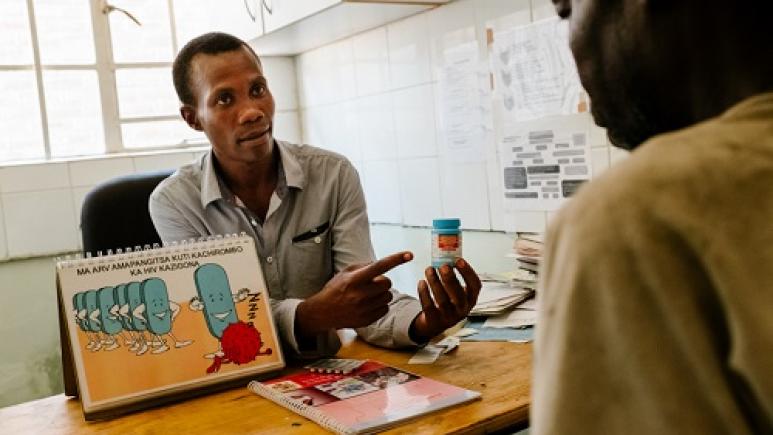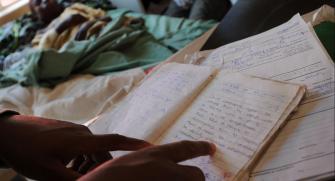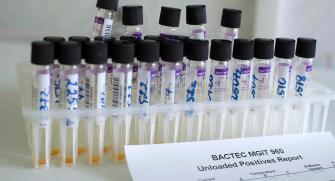HIV: Can we switch to a new line of antiretrovirals without testing for viral load?
Why did you conduct this study?

Birgit Schramm: The objective of our study was to assess the impact of changing first-line antiretroviral treatments (ART) policy in Malawi. The effectiveness of ART for HIV has been offset by the emergence of drug resistance, mainly concerning non-nucleoside reverse transcriptase inhibitors (NNRTIs), which were used widely in combination with nucleoside reverse transcriptase inhibitors (NRTIs) as first-line triple therapy. Almost universal high levels of NNRTI resistance have led WHO to recommend the use of dolutegravir as an alternative to NNRTIs in first-line AR. This potent and well tolerated new generation viral integrase inhibitor has a high barrier to HIV drug resistance. Following this recommendation and the availability of a low-cost generic fixed-dose formulation (TLD) of dolutegravir combined with the NRTIs lamivudine and tenofovir disoproxil fumarate (3TC+TDF) became available, many low- and middle-income countries changed their first-line policy to TLD.
In Malawi, recognizing the country's laboratory limitations to perform viral load testing, health authorities have chosen a pragmatic approach to transition people who were already receiving ART to TLD without prior viral load testing. However, clinical evidence was lacking whether this pragmatic strategy may pose a risk for people on ART who may have non-identified viremia (detectable viral load) and already carrying resistance to the two NRTIs (3TC+TDF) which remained the same as in the old first-line treatment.
Our study aimed to determine the virological response to the new first-line TLD by assessing viral load and HIV drug resistance during one year after transitioning of 1,892 adults in the Médecins Sans Frontières-supported decentralized HIV program in Chiradzulu district, Malawi.
What did you observe?
B. S.: In Chiradzulu, where MSF supports the HIV program since more than two decades, we observed high viral load suppression already before transitioning. Only 5.3% of participants had a detectable viral load at TLD start, but indeed 40% of these already had drug resistance to the TLD-regimen backbone 3TC+TDF. Encouragingly, at 12 months after TLD start, nearly all participants (98%) had a suppressed viral load, including 88% of those who were viremic at TLD start. The most critical finding was that also the subgroup of study participants with 3TC+TDF resistance achieved very high viral load suppression (97%), at 12- and 18-months post TLD start. This had been one of the main concerns of the transition strategy.
We also observed very infrequently viral failure (two detectable viral load results within 3 months) on TLD. On the other hand, people who were already viremic at TLD start had a significantly higher risk of viral failure. This was independent of the presence of 3TC+TDF resistance, and likely related to incomplete adherence to treatment. Furthermore, two participants with viral failure had developed resistance to Dolutegravir, as early as 6 months after TLD start. Both patients had a detectable viral load at TLD start.
What conclusions do you draw?
B. S.: This is the first evaluation of the impact of a mass transitioning to TLD first-line without prior viral load testing. These were also the first longer-term outcome data on the use of TLD in an African setting outside a clinical trial. The study provides important information for the management of people living with HIV, as many countries with limited resources and limited availability of viral load tests have opted for a similar approach of introducing the TLD regimen. The high levels of viral suppression and infrequent viral failure observed after one year on TLD, support Malawi’s pragmatic mass-transitioning strategy. Importantly, pre-existing 3TC+TDF resistance did not compromise viral load suppression on TLD.
On the other hand, our results suggest that a non-suppressed and high viral load prior to transitioning, in combination with persistent difficulties in adherence to therapy may lead to rapid development of Dolutegravir resistance in some individuals. These findings reiterate the importance of regular viral load monitoring, as well as the need to implement Dolutegravir resistance surveillance. Viral load measurement is the gold standard method to monitor response to treatment and is recommended every 12 months for people on ART, but it requires easy access to viral load testing for all. Most resource-limited countries also lack the capacity for costly HIV drug resistance testing. Simplified and affordable HIV resistance testing technologies are urgently needed, also in the era of a more robust Dolutegravir-based first-line regimen.
Photo Credit Isabel Corthier/MSF










